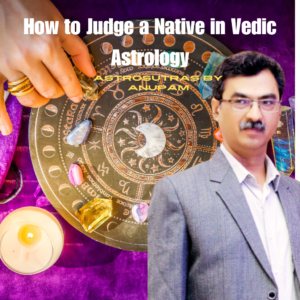Lunar-Based Yogas in Vedic Astrology: A Detailed Analysis with Logical Explanation
Introduction
The Moon (Chandra) is one of the most crucial planets in Vedic astrology, as it governs the mind, emotions, perception, and overall well-being of a person. Since life experiences are largely shaped by our mental state, the Moon’s position and its associations in a horoscope play a key role in determining a native’s strengths, weaknesses, and fortune.
Many Yogas (special planetary combinations) in astrology are based on the Moon’s position in relation to other planets. These Yogas provide deep insights into a person’s mental stability, success, emotional resilience, and fortune.
Key Classical References on the Importance of the Moon
Brihat Parashara Hora Shastra (BPHS):
“Manahkaraka Chandrah” – The Moon is the significator of the mind.
Phaladeepika:
“The strength of the Moon defines the native’s perception and ability to experience happiness or sorrow.”
Jataka Parijata:
“A well-placed Moon grants prosperity, while an afflicted Moon leads to mental instability and struggles.”
Logic Behind Lunar Yogas in Vedic Astrology
- The Moon reflects our mental state, and since our thoughts influence our actions and destiny, lunar Yogas shape a person’s fate and experiences.
- The Moon is the fastest-moving planet, changing signs every 2.5 days. This means its placement and aspects provide immediate effects in daily life.
- The Moon governs perception, and perception influences how a person reacts to situations—whether they see opportunities or obstacles.
Major Lunar-Based Yogas in Vedic Astrology
1. Gaja Kesari Yoga (The Elephant-Lion Yoga)
Formation:
Occurs when Jupiter is in Kendra (1st, 4th, 7th, or 10th house) from the Moon.
Effects:
- Makes a person wise, intelligent, and influential.
- Grants wealth, fame, and leadership abilities.
- Brings respect from authorities and the public.
Logical Reasoning:
- Jupiter is the planet of wisdom, prosperity, and divine blessings, and when placed in Kendra from the Moon (mind), it expands the native’s mental ability, wealth, and fortune.
- The person develops a balanced, positive, and broad-minded approach to life, leading to success.
Example: A person with Moon in Taurus and Jupiter in Leo (4th house from the Moon) will have great wealth, knowledge, and influence in society.
2. Chandra-Mangal Yoga (Moon-Mars Conjunction)
Formation:
Occurs when the Moon and Mars are in conjunction (same house) or in mutual aspect (7th aspect).
Effects:
- Provides high energy, courage, and business acumen.
- Makes a person determined and action-oriented.
- Can also cause emotional aggression and impulsiveness.
Logical Reasoning:
- The Moon (mind) + Mars (action and aggression) = Emotional Drive.
- If well-placed, it gives quick decision-making and leadership qualities.
- If afflicted, it causes anger issues, conflicts, and rash decision-making.
Example: A person with Moon-Mars in Aries (exalted Mars) will be fearless, action-driven, and financially successful.
3. Chandra-Aditya Yoga (Sun-Moon Conjunction)
Formation:
Occurs when the Sun and Moon are in conjunction (same house).
Effects:
- Enhances determination, authority, and focus.
- Increases ego and self-reliance.
- Can create mental stress due to inner conflicts (Amavasya effect).
Logical Reasoning:
- The Sun (soul and ego) combines with the Moon (mind and emotions), creating a strong-willed personality.
- However, if this conjunction is too close (within 5 degrees), it may result in weak emotional stability (Amavasya Yoga).
Example: If Sun and Moon are in Leo (own sign of Sun), the person will be authoritative, self-reliant, and confident.
4. Kemadruma Yoga (Affliction of the Moon)
Formation:
Occurs when there are no planets (except the Sun) in the 2nd and 12th houses from the Moon.
Effects:
- Causes mental instability, financial struggles, and loneliness.
- Leads to lack of confidence and depression.
- Affects success, relationships, and general well-being.
Logical Reasoning:
- The Moon needs support from other planets to function well.
- Without planets on either side, the native feels isolated, unsupported, and mentally weak.
Example: A person with Moon in Scorpio (debilitated) with Kemadruma Yoga will face emotional instability and financial insecurity unless other Yogas counteract it.
Cancellation Factors (Nivaran Yogas):
- If the Moon is aspected by benefic planets (Jupiter, Venus, Mercury).
- If the Moon is strong in Navamsa (D-9 chart).
5. Sunapha, Anapha, and Durudhara Yogas
Sunapha Yoga (Planets in 2nd House from Moon)
- If planets (except Sun) are in the 2nd house from the Moon, the native will be wealthy, intelligent, and resourceful.
Anapha Yoga (Planets in 12th House from Moon)
- If planets (except Sun) are in the 12th house from the Moon, the native will be spiritual, self-sufficient, and content.
Durudhara Yoga (Planets in 2nd and 12th Houses from Moon)
- If planets are in both 2nd and 12th house from the Moon, the native enjoys prosperity, wisdom, and balanced emotions.
Logical Reasoning:
- These Yogas create a support system around the Moon (mind), ensuring stability and progress.
- If benefics like Jupiter and Venus are involved, the effects are very positive.
Example: If Moon in Taurus has Venus in 2nd house and Jupiter in 12th house, the native will be highly successful, wealthy, and spiritually balanced.
Conclusion
Lunar-based Yogas significantly influence a person’s mind, emotions, success, and destiny. The logic behind these Yogas is simple:
- The Moon represents the mind, and a strong, supported Moon leads to prosperity, stability, and success.
- A weak or afflicted Moon can cause financial, emotional, and psychological struggles.
By analyzing these Yogas in a birth chart, we can understand how a person perceives life, makes decisions, and deals with challenges.

